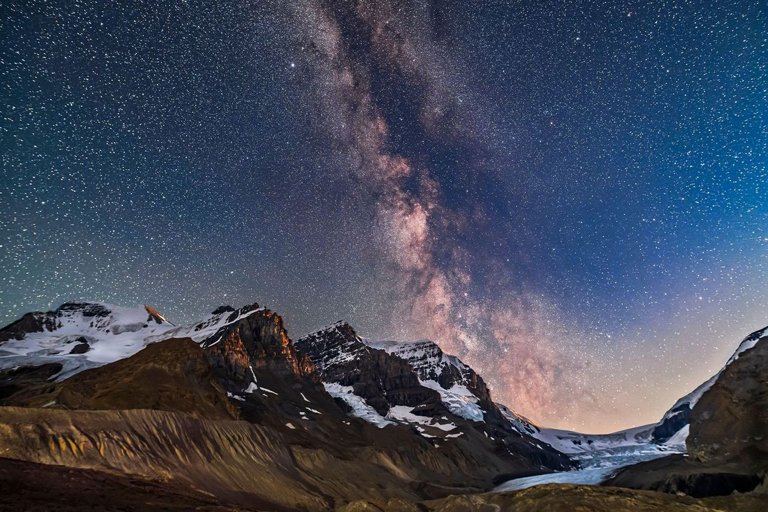Parks Canada’s continued expansion of its Night Sky Preservation Program reflects the organization’s long-term commitment to protecting the natural darkness of the country’s most treasured landscapes. As artificial light pollution increases in communities across Canada, maintaining dark‑sky areas has become crucial for preserving ecological health and supporting visitors seeking clear and meaningful views of the stars. The latest program expansion gives more regions the tools to safeguard these uniqu...
One of the program’s primary goals is to reduce the spread of excessive outdoor lighting that disrupts nocturnal wildlife. Many species rely on natural light cycles to hunt, migrate, and reproduce, making dark environments essential for their long‑term survival. Parks Canada has worked closely with biologists and local stakeholders to implement guidelines for responsible lighting that minimize disturbances to animals, especially in sensitive habitats that border major national parks.
Another significant focus of the expansion involves supporting Indigenous communities who maintain cultural traditions connected to the night sky. Many First Nations and Métis groups consider celestial features an important part of storytelling, navigation, and seasonal understanding. The preservation program ensures that future generations can continue observing the same unpolluted skies their ancestors relied upon, strengthening the connection between cultural heritage and the natural world.
To encourage public participation, Parks Canada has also increased its investment in educational programming centered around astronomy. This includes guided night walks, telescope demonstrations, and workshops that teach visitors about constellations, planetary movement, and the science behind light pollution. By helping people develop a deeper appreciation of the night sky, the program aims to inspire long‑term stewardship and promote responsible outdoor activity well beyond park boundaries.
Communities surrounding dark‑sky preserves have played a vital role in supporting the program’s success. Local businesses, residents, and municipal governments have collaborated on initiatives to install shielded lighting, reduce unnecessary night‑time brightness, and update infrastructure to be more energy‑efficient. These efforts not only enhance environmental protection but also create opportunities for tourism tied to stargazing, photography, and nature education.
Astrophotographers from across Canada and beyond have praised the program for making it easier to capture high‑quality images of the Milky Way, meteor showers, and deep‑sky objects. Many parks now offer designated viewing areas with reduced ambient light, giving visitors a chance to experience expansive night skies that are increasingly rare in urban or suburban environments. For many photographers, these preserves have become essential destinations for documenting natural celestial beauty.
Researchers studying atmospheric conditions have also benefited from the program’s growth. Dark‑sky preserves offer ideal conditions for measuring long‑term environmental changes, such as shifting humidity patterns, visibility fluctuations, and cloud movement. These data points help scientists better understand how climate change affects nocturnal visibility and contributes to the broader understanding of environmental dynamics across Canada’s diverse ecosystems.
As part of the program’s new initiatives, several parks have introduced volunteer opportunities that allow citizens to contribute directly to night‑sky monitoring. Participants help measure sky brightness, identify sources of intrusive lighting, and share observations that guide ongoing conservation strategies. This community‑science approach broadens engagement and strengthens the program’s ability to respond to environmental challenges quickly and accurately.
Tourism officials have noted a steady increase in visitors seeking nighttime park experiences, particularly during annual celestial events such as meteor showers, eclipses, and planetary alignments. Many parks now coordinate special programming to coincide with these events, offering guided activities that combine education with memorable outdoor adventure. These experiences highlight the value of protecting dark skies not only for ecological reasons but also for public enjoyment.
Educators have found creative ways to integrate the Night Sky Preservation Program into school activities, encouraging students to explore astronomy, environmental science, and cultural studies through hands‑on learning. Field trips, classroom presentations, and nighttime observation events help students build a sense of curiosity and responsibility toward environmental stewardship. Many teachers report that these activities leave lasting impressions on young learners.
With the ongoing expansion, Parks Canada is also updating signage, maps, and visitor resources to help travellers locate designated viewing zones and understand responsible nighttime behaviour. Clear communication is essential to ensuring that guests remain safe while navigating low‑light environments, especially in remote areas where wildlife activity increases after sunset. These updates ensure that the program remains accessible and informative for all visitors.
Long‑term monitoring remains a central part of the program’s strategy. Officials regularly assess light levels, evaluate restoration progress, and identify emerging threats to night‑sky quality. This systematic approach ensures that improvements are measurable and sustainable, helping Parks Canada prioritize areas requiring additional support or conservation measures. The results also guide future program expansions and policy recommendations.
The continued growth of the Night Sky Preservation Program highlights Canada’s leadership in environmental protection and dark‑sky conservation. By safeguarding natural darkness, Parks Canada helps preserve ecosystems, cultural traditions, and the awe‑inspiring beauty of the night sky. As more regions join the initiative, Canadians and visitors alike will have greater opportunities to experience the wonder of an unpolluted night sky—an increasingly rare gift in a modern, illuminated world.
